Recent Articles
Popular Makes
Body Types
The 9 Most Fuel-Efficient Mid-Size Sedans for 2016
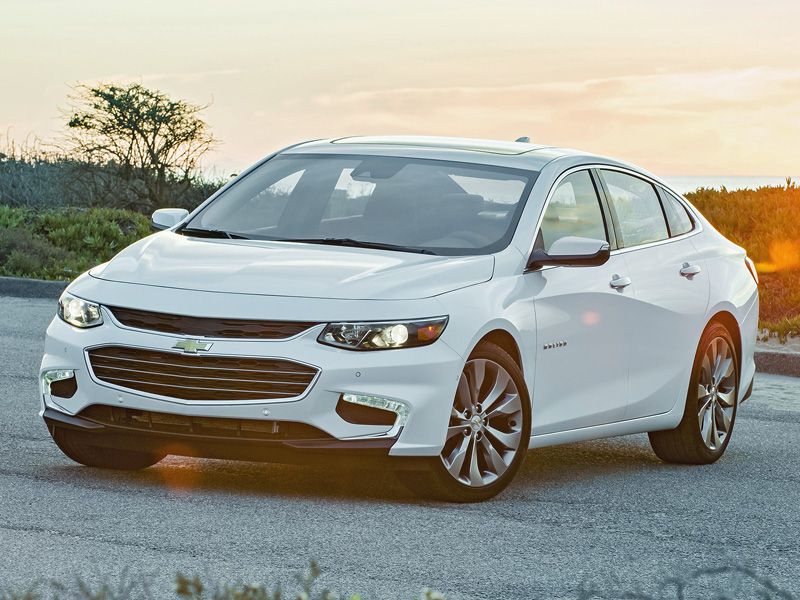
ABTL 2016 Chevrolet Malibu Photo
On Martin Luther King Jr. Day, after the lifting of sanctions on Iran, which allows that nation to saturate an already oversupplied market with oil, the price of a barrel of Brent Crude fell to less than $28 per barrel.
That same Monday in January, according to Gas Buddy, just 12 states were selling gas priced higher than $2 per gallon, and nearly half of them boasted Pacific coastline. In quake-rattled Oklahoma, where fracking is a way of life, a gallon of unleaded ran $1.55 on average, the lowest of America’s 50 states.
Experts predict oil and gasoline prices could sink further.
Meanwhile, in AutoIndustry Land, increased federal fuel economy standards are forcing car companies to build more efficient vehicles. When searching for the most fuel-efficient mid-size sedan for 2016, the models at the top of the list are hybrids made by Ford, Hyundai, Kia, and Toyota, with Chevrolet soon to join that list.
Hybrids, however, typically cost more than traditional models, making their purchase difficult to justify in terms of long-term cost savings. This is especially true when gas is selling for less than $2 per gallon. Frequently, hybrid models also require trade-offs in terms of trunk space, and while their electric assist motors deliver extra punch right off the line, hybrids can quickly run out of acceleration. Additionally, their extra weight and low rolling resistance tires can have negative impacts on ride and handling.
Therefore, for this list, we’re going to disqualify hybrids, instead focusing on those models that have traditional gasoline engines and automatic transmissions. By that standard, the nine most fuel-efficient mid-size sedans for 2016 are listed on the pages that follow, in ascending order according to their official EPA fuel economy estimates.
Number 9: 2016 Ford Fusion
Ford offers three different gasoline engines in the 2016 Fusion, and the one that “EcoBoosts” this model onto our list is the turbocharged, 1.5-liter 4-cylinder that is exclusively available for the SE trim level.
This engine makes 181 horsepower and 185 lb.-ft. of torque, more than the standard 2.5-liter 4-cylinder, and is paired with a 6-speed automatic transmission driving the car’s front wheels. When equipped with optional automatic engine start/stop technology, this 1.5-liter EcoBoost engine is rated to get 25 mpg in the city, 37 mpg on the highway, and 29 mpg in combined driving.
Trunk space measures 16 cu.-ft., and the Fusion earns a 5-star overall crash-test rating from the federal government. This year, it lost its “Top Safety Pick” rating from the Insurance Institute for Highway Safety (IIHS).
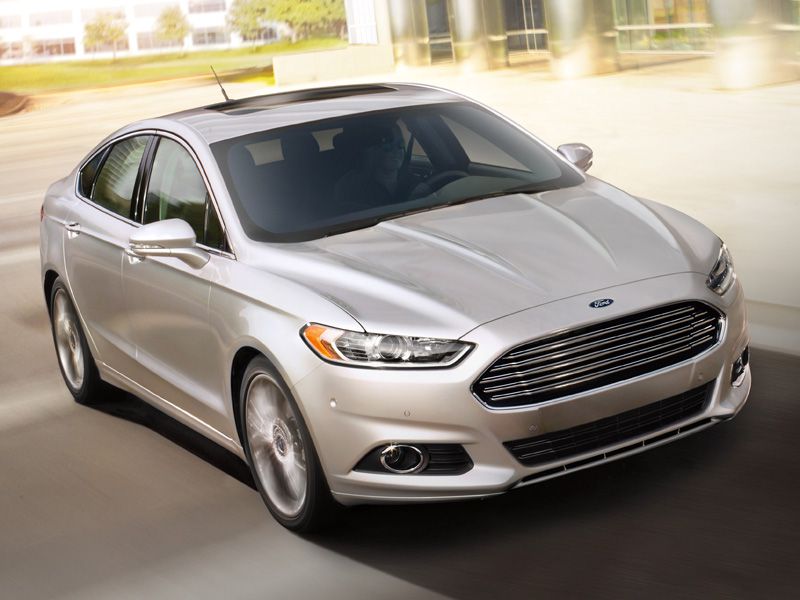
Number 8: 2016 Volkswagen Passat
Though “Dieselgate” has sidelined the Passat’s efficient turbo-diesel engine option, the standard turbocharged 1.8-liter gasoline 4-cylinder does a good job of conserving fuel in its own right, to the tune of 25 mpg in the city, 38 mpg on the highway, and 29 mpg in combined driving.
With 170 horsepower and 184 lb.-ft. of torque, the engine’s broad power curve makes this sizable sedan feel more sprightly and nimble than might be expected. A 6-speed automatic transmission powers the car’s front wheels. For more power, Volkswagen offers a V6 engine option but only with the most expensive SEL Premium trim.
Interior space is more like a full-size than a mid-size car, and the Passat’s trunk holds 15.9 cu.-ft. of luggage. The IIHS calls the Passat a “Top Safety Pick,” while the federal government has yet to establish crash-test ratings for the 2016 model.
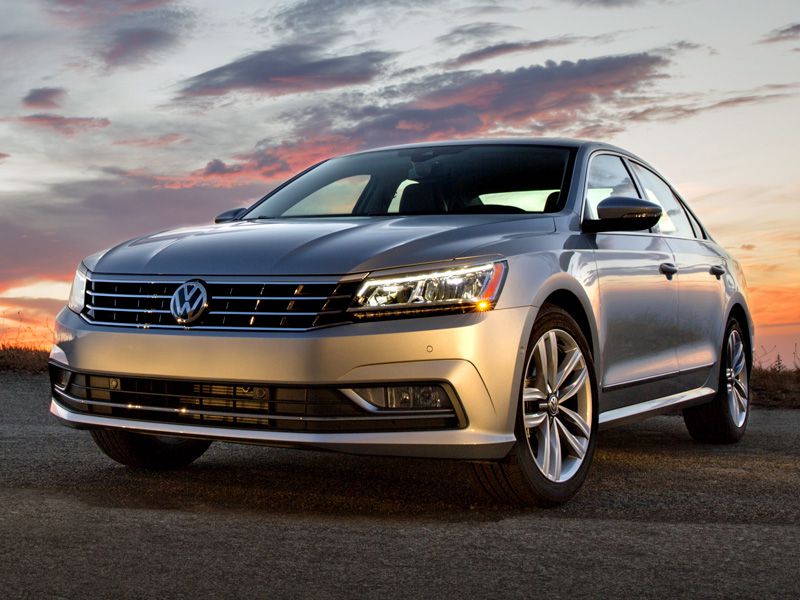
Number 7: 2016 Subaru Legacy
The only car on our list equipped with all-wheel drive, the Subaru Legacy 2.5i models are rated by the EPA to return 26 mpg in the city, 36 mpg on the highway, and 30 mpg in combined driving.
A 2.5-liter 4-cylinder engine makes 175 horsepower and 174 lb.-ft. of torque, fed to all four wheels through a continuously variable transmission (CVT). A more powerful 6-cylinder engine is available, but only with the most expensive Limited trim level.
One of the safest sedans you can buy, the Legacy earns a 5-star overall rating from the federal government and a “Top Safety Pick” rating from the IIHS. The trunk measures 15 cu.-ft.
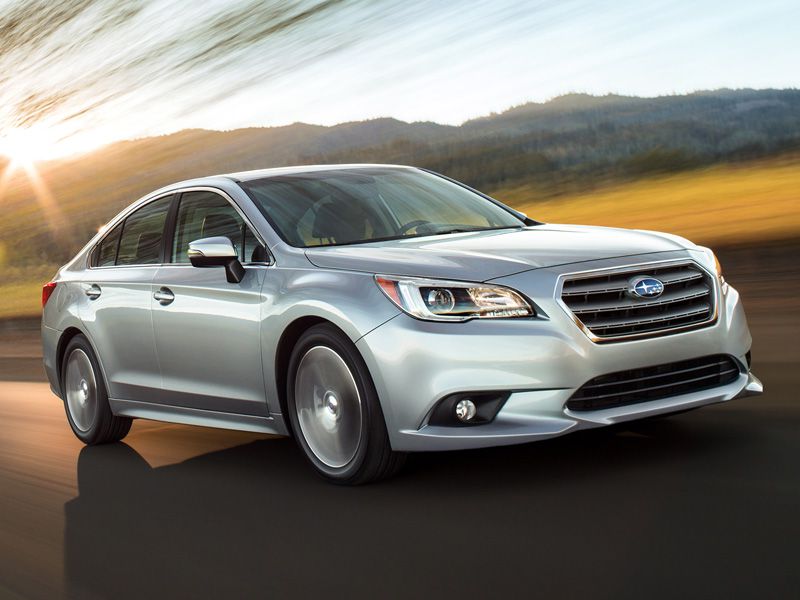
Photo by Subaru
Number 5 (in a tie): 2016 Honda Accord
Choose a Honda Accord with its standard 2.4-liter 4-cylinder engine and available CVT, and it should return 27 mpg in the city, 37 mpg on the highway, and 31 mpg in combined driving, according to the EPA. This power plant develops 185 horsepower and 181 lb.-ft. of torque.
The Accord Sport trim level, equipped with larger 19-inch wheels and making slightly more horsepower and torque, is also slightly less efficient, at 26-city/35-highway and 30 mpg in combined driving. A V6 engine is also available for EX-L and Touring models.
All but the EX-L trim level supply a trunk measuring 15.8 cu.-ft. A premium sound system cuts the EX-L’s trunk down to 15.5 cu.-ft. In federal government crash testing, the Accord receives a 5-star overall rating, while the IIHS gives the Accord a “Top Safety Pick” rating.
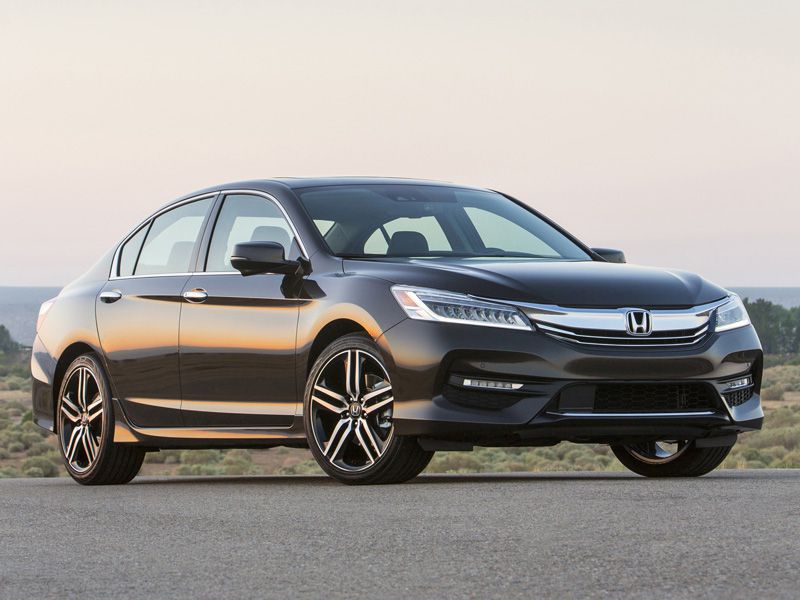
Photo by Honda
Number 5 (in a tie): 2016 Chevrolet Malibu
With the redesigned 2016 Malibu, Chevrolet hopes to recapture some of its mid-size family sedan mojo. Of the three powertrains available, it is the most popular combination that makes our list: the turbocharged 1.5-liter 4-cylinder making 160 horsepower and 184 lb.-ft. of torque.
Thanks to automatic engine stop/start technology, this version of the Malibu is rated to get 27 mpg in the city, 37 mpg on the highway, and 31 mpg in combined driving. A more powerful turbocharged 2.0-liter 4-cylinder is available, and the new Malibu’s trunk holds 15.8 cu.-ft. of cargo. Crash-test ratings were not available at the time this article was researched.
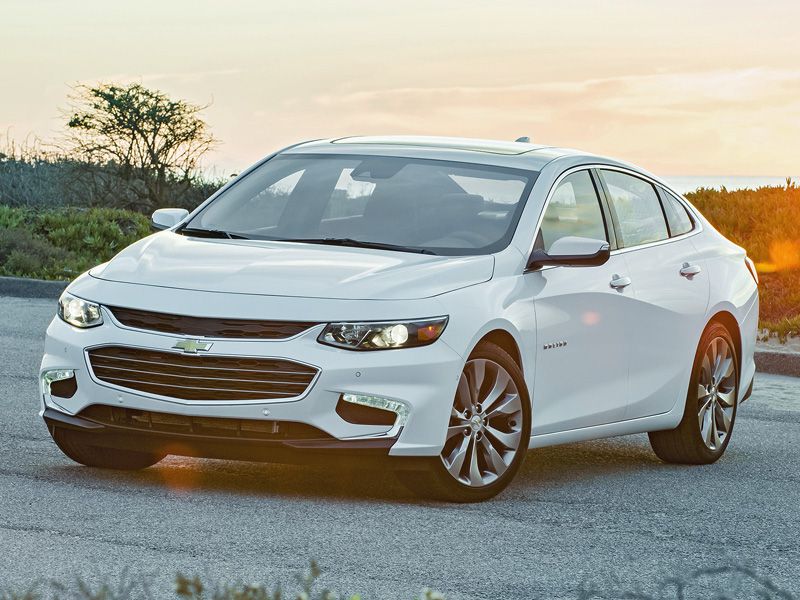
Number 4: 2016 Nissan Altima
Thanks to powertrain updates and enhanced aerodynamics, the refreshed 2016 Altima is rated to get 27 mpg in the city, 39 mpg on the highway, and 31 mpg in combined driving. The sporty new SR model is not quite as efficient, at 26-mpg city/37-mpg highway and 30 mpg in combined driving.
To achieve these results, you need the Altima 2.5, with the 2.5-liter 4-cylinder engine making 182 horsepower and 180 lb.-ft. of torque. Altima 3.5 models have a more powerful, and less efficient, V6 engine.
You can squeeze 15.4 cu.-ft. of cargo in the Altima’s trunk, and Nissan’s midsize family sedan earns a “Top Safety Pick” rating from the IIHS. The federal government has yet to establish crash-test ratings for the updated Altima.
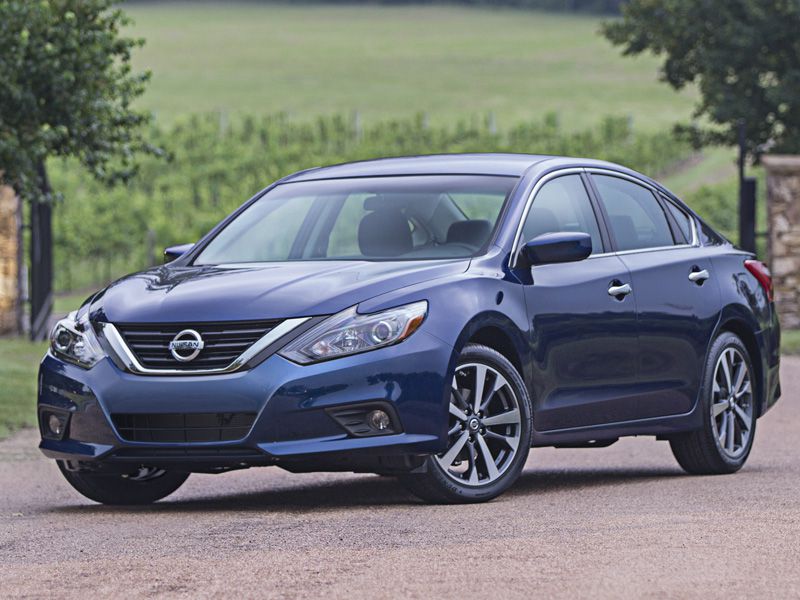
Number 3: 2016 Hyundai Sonata
Just one version of the Sonata ranks this high, though most models perform well when it comes to fuel efficiency. For maximum mileage from a gasoline engine, though, you’ll want the Sonata Eco, which is rated to return 28 mpg in the city, 38 mpg on the highway, and 32 mpg in combined driving.
Eco models are equipped with an exclusive powertrain, a turbocharged 1.6-liter 4-cylinder engine paired with a 7-speed dual-clutch automated manual gearbox. The Sonata Eco generates 178 horsepower and 195 lb.-ft. of torque, and benefits from a broad power curve so that it feels more powerful than it is.
Trunk space impresses at 16.3 cu.-ft., and the Sonata is one of the safest cars on this list, getting 5-star ratings in each individual federal government and IIHS crash test.
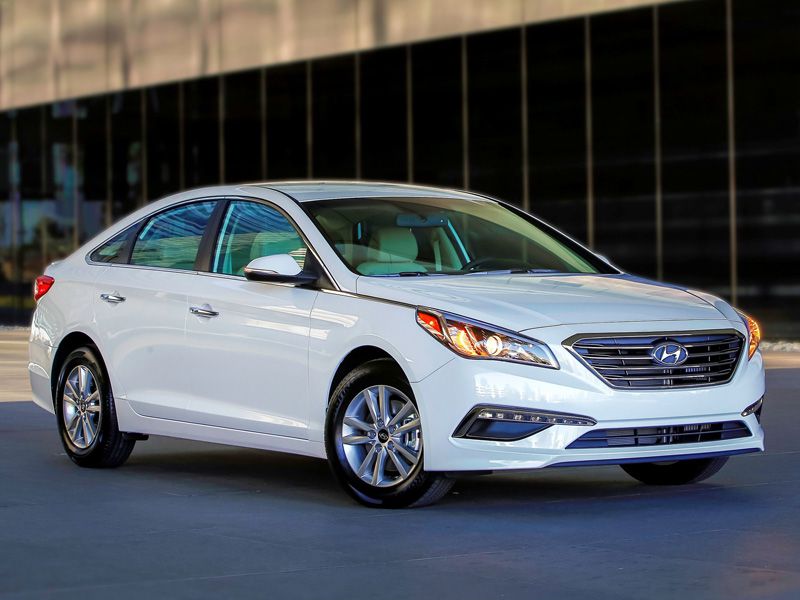
Number 2: 2016 Kia Optima
Hyundai and Kia models share engineering, so the same turbocharged 1.6-liter that put the Sonata Eco so high on our list of the most fuel-efficient mid-size sedans for 2016 is also offered in the completely redesigned Kia Optima. Here, however, the engine is expected to return 28 mpg in the city, 39 mpg on the highway, and 32 mpg in combined driving.
Installed in the Optima LX 1.6T trim level, the engine makes 178 horsepower and 195 lb.-ft. of torque, delivered to the car’s front wheels through a 7-speed dual-clutch automated manual transmission. Also, just as is true of the Hyundai Sonata, Kia also offers a 2.4-liter 4-cylinder and a turbocharged 2.0-liter 4-cylinder for the Optima. The Optima’s trunk, however, measures 15.9 cu.-ft.
As this article was researched, the new 2016 Optima had not been crash-tested.
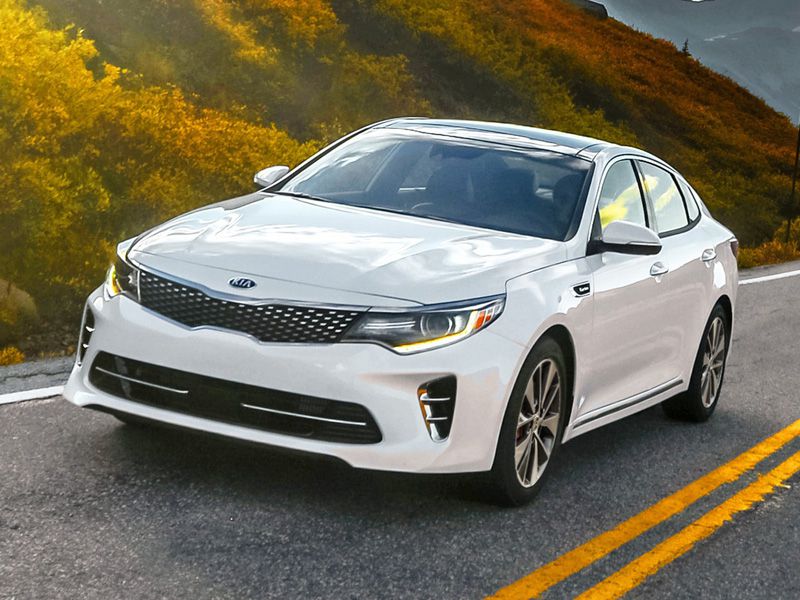
Photo by Kia
Number 1: 2016 Mazda Mazda6
Buy a Mazda6 Grand Touring, opt for the Technology Package, and a brake energy regeneration system bumps the car’s city and highway fuel economy ratings by 2 miles per gallon each, to 28 in the city and 40 on the highway, for a combined rating of 32 mpg.
Equipped with Mazda’s SkyActiv 2.5-liter 4-cylinder engine, the Mazda6 makes 184 horsepower and 185 lb.-ft. of torque. A more powerful engine option is not available, but driving enthusiasts can get a manual gearbox in some versions of the car.
Trunk room measures smaller than any other car on this list, at 14.8 cu.-ft. Safety ratings are impressive, though, the Mazda6 earning a 5-star overall rating from the federal government and a “Top Safety Pick” rating from the IIHS.
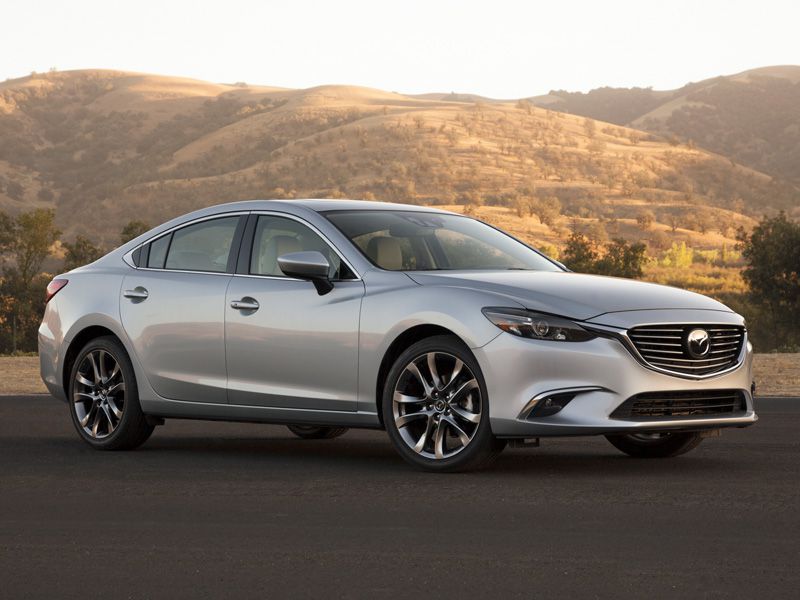
Photo by Mazda